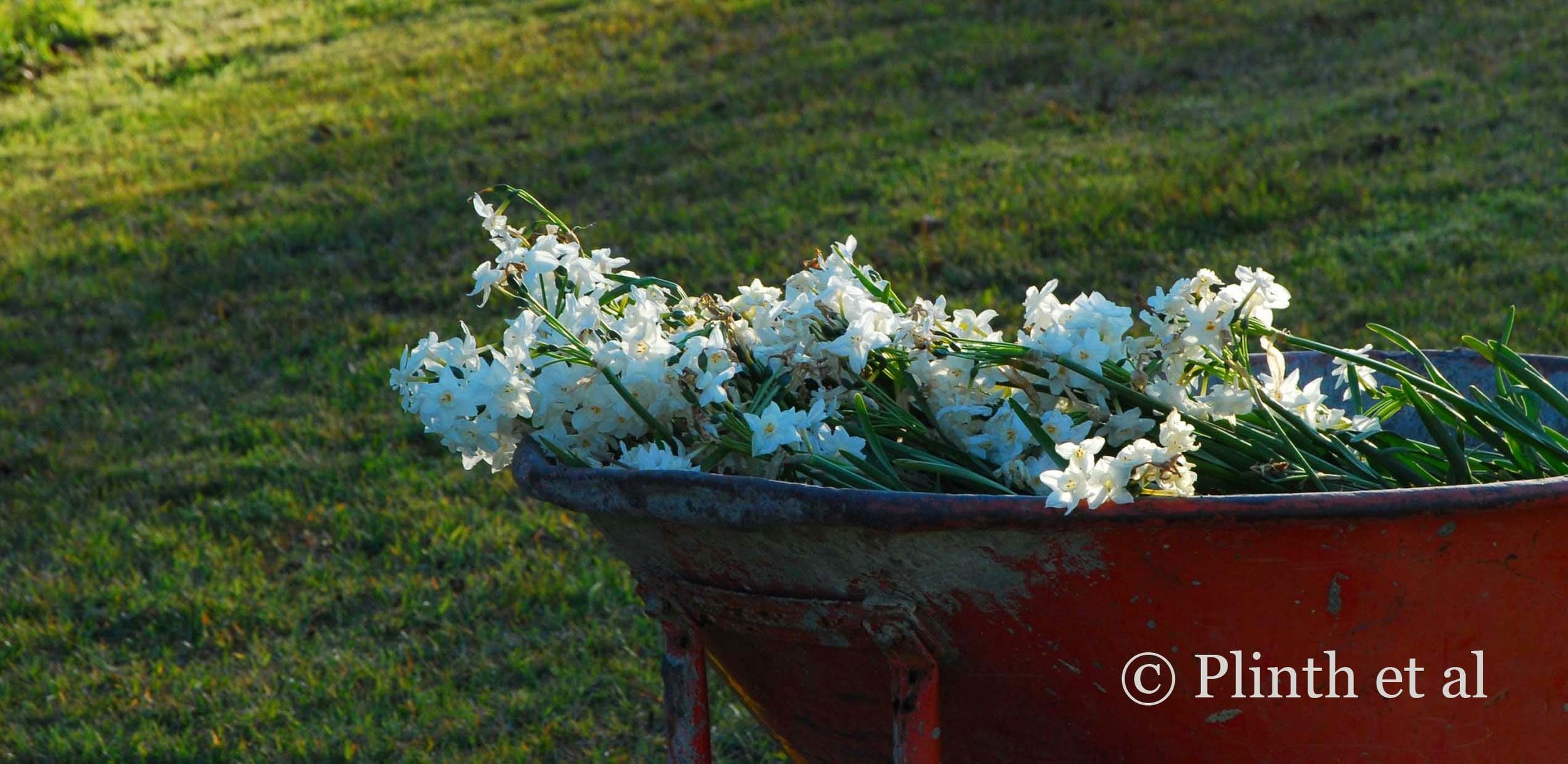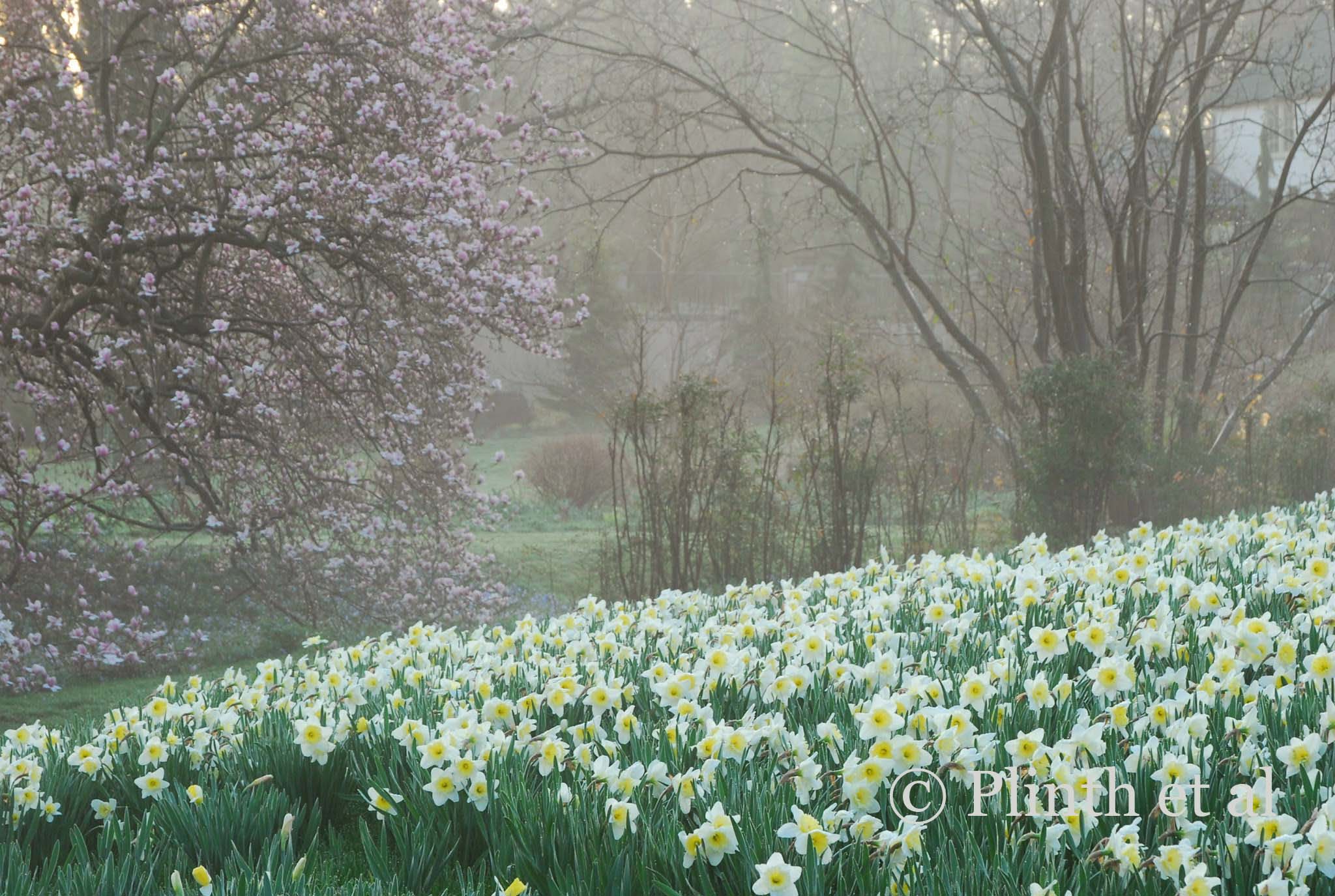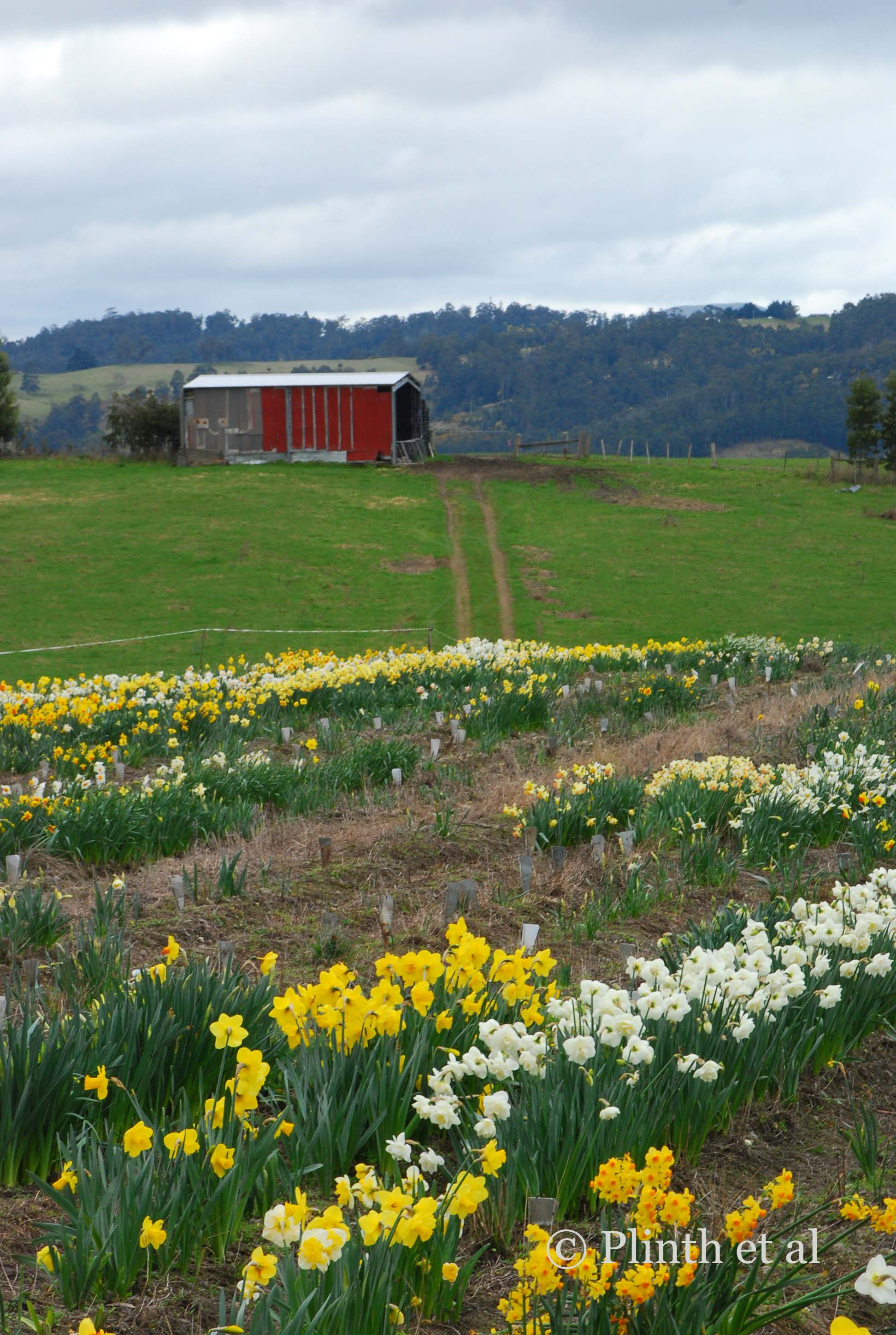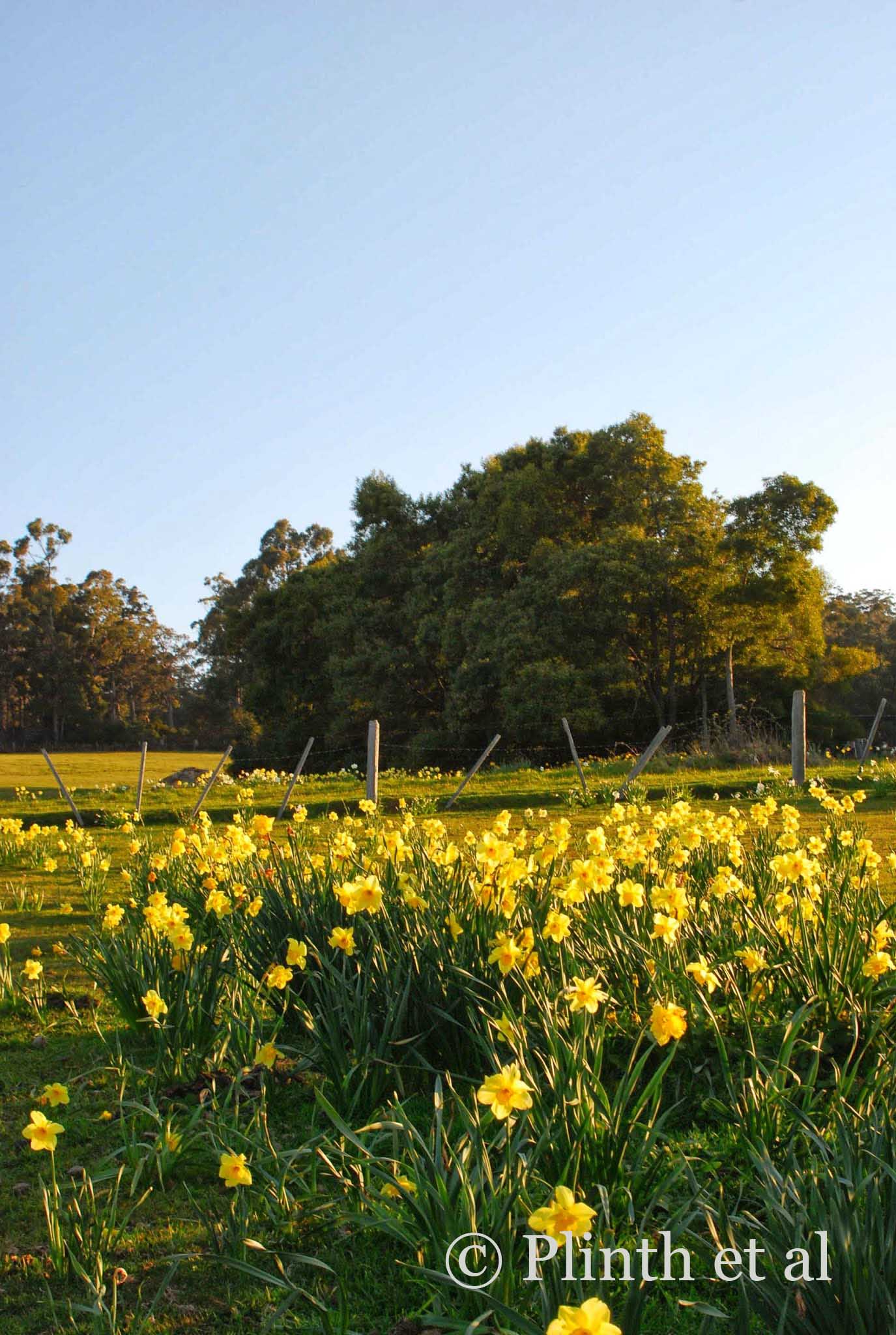île de jonquilles
Dear Jimmy,
Your post on daffodils reminded me how late spring has been this year in eastern U.S. Winter has been behaving like a dinner guest whose welcome has gone beyond stale, hence our 'Tete-a-Tete' and 'Ice Follies' have not flowered as they usually do at this time. The daffodils are only emerging, buds intact and tightly sheathed against the elements. However, their resilience has always reassure that winter has relinquished its grip, ushering in spring without delay. I long for warm days, with snow having lost its novelty. My friends' photographs in the Pacific Northwest already show Corylopsis, rhododendrons, and various spring ephemerals in full glory.
Islands seem to be flush with daffodils - the Isles of Scilly off the southwest coast of Cornwall, UK, and Tasmania. Warm sunny summers and cold moist winters on the islands create optimal conditions for growing bulbs. The mild climate in the Isles of Scilly allowed the islanders the bragging rights to the first daffodils of the UK, as well as a head start on the cut flower industry; large quantities of cut daffodils were dispatched by boat and then transported on the rail from Penzance to London. In fact, cut flowers formed the cornerstone of the Scillionian economy for over 130 years. The majority, if not all daffodils grown are tazetta-types, which produce up to 15 highly scented flowers per stem. Tazettas need dry warm summers during dormancy for successful flowering, and the long season of Isles of Scilly from May to August, combined with sandy soils, makes a significant difference. Another crucial factor in the industry's success was the use of windbreaks, an absolute necessity on the gale-exposed islands. Growers depended on two salt-tolerant and wind-resistant New Zealand shrubs, Pittosporum crassifolium and Olearia traversii.
Daffodils are popular in Tasmania where the Tasmanian Daffodil Council promotes them. You can expect at least three months of daffodils if varieties selected for different bloom periods are planted, and the cold nights certainly enhance flower longevity. The nucleus of Tasmania's daffodil industry began in the 1920s when several enthusiasts imported bulbs from England and started breeding programs themselves. Their work was exhibited at the Hobart Horticultural Society's annual daffodil show. Dr. Tim Jackson, one of the early enthusiasts, eventually started a business still going strong today. Evidently his passion rubbed off on the second generation, and one of the Jacksons who fought in the World World II even kept a pot on the British naval warship HMS Wanderer. A cousin, a warplane navigator, was once invited to a country estate near his airfield where the owner boasted a new daffodil, exclaiming: "You'll have never seen anything like this before". One only can imagine the owner's surprise when the cousin recognized the hybrid and credited its origin to his grandfather.
On a blustery gray day, my friends and I drove out a hour away for an open day hosted by Jackson Daffodils near the Southwest National Park, a scenic area. Their bulbs can be bought from an Oregon firm who sells them for a princely sum. They are not the 'bulk bag' types one can purchase inexpensively at the local home improvement center. The fields were resplendent with varieties in whites, yellows, oranges, and pinks, and the gusts played up the flowers' robust gaiety. Even my friend's dog was excited, recharged by the new scents of the landscape. Who knew how much glee these flowers imparted? Forgetting the dull skies, we left smiling from the simple pleasure of seeing them.
Across from my friends' coastal property used to be a commercial bulb farm that exported bulbs and cut flowers to the mainland. Although the majority of the bulbs were dug up and sold before the operation ceased, surviving remnants still sprout defiantly each spring. I learned from my friend that flowering bulbs can be dug up and transplanted without problems, taking out the problematic guesswork that accompanies dying or dormant bulbs. The bulbs need to be planted deep. After obtaining permission, he was able to replicate those naturalistic groups of daffodils without that hodgepodge effect. At first I was skeptical, only to be convinced the following spring when the same bulbs returned to flower. They look terrific under the vibrant green drapery of silver birches.
No matter how many bulbs we dug up, there were always more. The sandy loam soil made it easier to retrieve the entire plants, bulb and all, easily from the ground. Occasionally we did accidentally cleave a bulb, but once you gained experience, you were able to gauge how deep and what angle your spade went in, teasing out the plants out without much damage.
The Iberian peninsula (Portugal and Spain) is considered the centre of diversity for Narcissus. Several years ago, I remember seeing wild white daffodils growing in wild scrub near the Spanish border - we never disembarked from the car to identify the species. Perhaps one of the days you will have a chance to drive to northern Spain and bear witness to fields of wild daffodils. Sad as Narcissus and Echo's fates were in Greek mythology, a love affair with daffodils is hardly narcissistic.
~Eric














